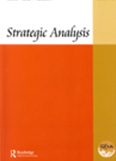Nepal: New ‘Strategic Partner’ of China?
There has been a major shift in China’s foreign policy towards Nepal since the Maoist ascendance to power. China had earlier adopted a policy of ‘non-intervention’ in the internal matters of Nepal and largely stayed out of Nepalese internal politics. However, the demise of the monarchy and the ascendance of political parties have forced China to reshape its Nepal policy. Moreover, frequent protests by Tibetans in recent months alerted the Chinese to the possibility of the China-Tibet border being misused.
- Nihar R. Nayak
- March 30, 2009







